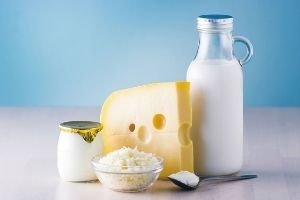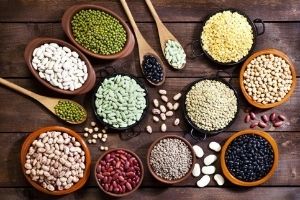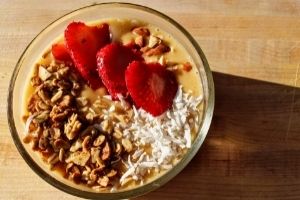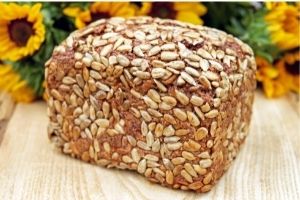Top 9 Healthy Food for Kids
Healthy food for kids and eating habits play a vital role in the overall growth of a child. Being a responsible parent, one of the essential things you can do is assist or inspire your child to develop healthy eating habits. However, getting kids off to a good start regarding good nutrition and healthy food lays the foundation for a healthy lifestyle that should be helpful in adulthood. On the other hand, a nutritious diet significantly impacts your child’s health, assisting them in maintaining a healthy weight, regulating their emotions, sharpening their wits, and avoiding a range of health issues. You can add different types of healthy food for kids with an attractive style to inspire them to adapt to healthy food.
Table of Contents
Know About Healthy Food for Kids
Children require three meals, two snacks, and plenty of water every three to four hours. Your child’s diet will be a lot more balanced, and they will be less fussy if you arrange the items mentioned in the diet. A well-balanced diet includes items from all three food groups: fruits and vegetables, whole-grain goods, and protein meals. The healthy food for kids that must be added to their regular diet are –
-
Milk and other Dairy Products
All dairy products like milk, paneer, yogurt, etc., are the rich source of calcium, vitamin D, in addition to other vitamins and minerals. Calcium is considered a mineral that we all require for strong bones and teeth.
Calcium is mainly obtained through milk in the diets of children of all ages. Mineral content and bone mineral density increase with regular consumption of low-fat dairy products. Consuming milk, cottage cheese, and yogurt lowers blood pressure, improves immunity, and lowers the risk of diabetes, in addition to creating strong bones.
Read here: Immunity Booster Foods
-
Pulses and Legumes
Pulses and legumes, such as soybeans, chickpeas, lentils, peanuts, and peas, are considered the best healthy food for kids as they are loaded with considerable amounts of protein micronutrients, like iron and folate, fiber, and PUFA.
Inclusion of these food items into kids’ diets could benefit as they also function as a prebiotic, promoting beneficial bacteria growth in the stomach. Pulses and legumes may be an important part of a vegetarian or vegan diet for kids and teenagers.
-
Oatmeal
Oats or oatmeal food are high in minerals, vitamins, fiber, and antioxidants, making them an excellent dietary choice for your kids. Starting the day with high-quality carbohydrates helps a child stay focused and provides the fuel to the young athletes to perform at their best during extended athletic events.
Also, Oats have a good quantity of antioxidants that help reduce the danger of free radical assault in the child’s body. Thus, adding oatmeal to your kid’s regular diet contributes to the growth and development of your little one.
-
Fruits
Various fruits such as Mango, banana, strawberry, apple, apricot, watermelon, pear, avocado, etc., are high in critical nutrients. They include folate, iron, calcium, fiber, vitamin A, vitamin B, and vitamin C, all of which are beneficial to your child’s health and well-being. Consuming different types of fruits keeps your child’s digestion healthy and energy level high.
Other fruit benefits: Kiwi Fruit Benefits | Dragon Fruit Benefits
-
Vegetables
Some Vegetables, like fruits, are nutritional powerhouses, so it is critical to include veggies in your child’s regular diet. Vegetables, including cabbage, broccoli, brussels sprouts, etc., are the richest sources of potassium and other essential minerals like magnesium, calcium, sodium, zinc, and iron.
All these ingredients help to boost kid’s immunity and reduce the risk of various diseases. You should also make sure that the type of veggies consumed is essential rather than the quantity.
-
Whole Grains
Whole grains food options can lower the risk of heart disease, diabetes, constipation, and unhealthily gained weight. They’re also high in Vitamin B and a variety of essential minerals.
Finally, whole grains digest slowly and provide:
-
- A consistent source of energy.
- Ensuring that children have the energy they require throughout the day.
- Thus considered healthy food for kids.
-
Eggs
Eggs are highly loaded protein sources for kids, as they provide necessary amino acids (protein’s fundamental building blocks) that the body cannot produce. They also include vital vitamins and minerals, including Vitamin A, which is necessary for healthy vision.
Choline is necessary for a healthy brain and heart, and selenium has antioxidant qualities and aids thyroid function in kids. They both are available in eggs. Eggs also contain lutein and Zeaxanthin that help build vision sharpness and reduce macular degeneration.
-
Nuts & Seeds
Daily consumption of nuts & seeds may aids various benefits in a child as it contains a substantial amount of vitamin E, omega-3 fats, fiber, and protein. Nuts & seeds are also high in zinc, iron, calcium, and B-complex vitamins, among other minerals that help develop a child’s immune system, focus, and overall health.
If a habit of eating nuts is formed in childhood, it will help maintain cholesterol, blood pressure, and blood sugar levels under control, which will benefit them in adulthood.
-
Fish
Being a rich source of high-quality protein and essential nutrients, such as omega-3 fatty acids, selenium, iodine, vitamin-D, and B12, fish are healthy food for kids. These nutrients may have a role in children’s and teenagers’ healthy physical and cognitive development.
You can Pick low-mercury fishes, such as salmon, sardine, and tuna, and add them to a variety of dishes to add to your child’s dietary habits.
You must add nutritious foods into your child’s food as it helps to grow, develop, and maintain their health. Because good eating habits begin at a young age, be sure to coach and advise your child or adolescent at many levels, such as grocery shopping and cooking.
Usually, kids avoid eating such food. So, you have to be innovative and patient while feeding them. You can opt to cook food in a shape they like, change the food form they like, try to make food kids centric, and mix various items of their choice.
Other useful links: Amla Benefits | Quinoa Benefits | Alsi Benefits | Giloy Benefits













